Luna-25, Russia's first lunar lander launched into space on August 11, sent back the first images from outer space.
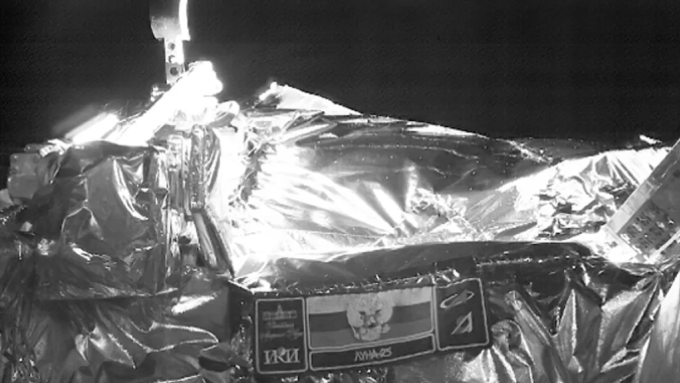
Image taken by Luna-25 on August 13, showing the mission symbol (center) mounted on the spacecraft. Photo: IKI RAS
Luna-25 took off at 7:10 p.m. local time on August 10 (6:10 a.m. Hanoi time on August 11) on a Soyuz-2.1b rocket from the Vostochny Cosmodrome in Russia's Amur region. This is the first domestically produced probe launched to the Moon in modern Russian history. Previously, Russia's closest lunar mission was Luna-24, which launched in 1976 and brought back about 170 grams of samples.
Luna-25 took its first images on August 13 and was released by the Institute for Space Research of the Russian Academy of Sciences (IKIRAS) on August 14. The black-and-white images show the Russian flag, the mission’s symbol, on the spacecraft’s hull, with the Earth and Moon shining in the distance against the dark background of space.
The photos were taken about 310,000 kilometers (190,000 miles) from Earth, according to IKI RAS. For comparison, the average distance between the Moon and Earth is 384,400 kilometers (238,000 miles).
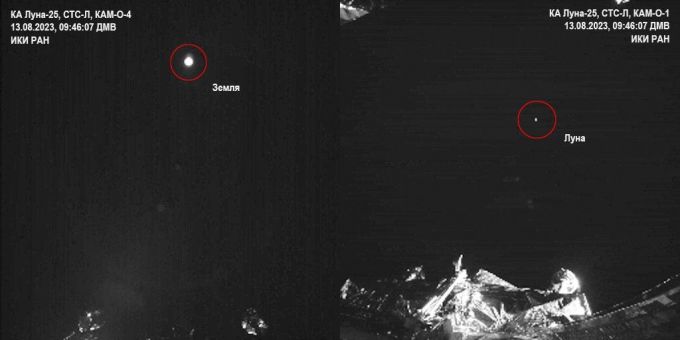
Luna-25 spacecraft takes pictures of Earth (left) and the Moon (right) from 310,000 km away from Earth. Photo: IKI RAS
The new images help to dispel concerns about Luna-25 after launch, proving that the spacecraft is still functioning properly and on track to its destination. "All systems of the spacecraft are operating normally, communication with the control station is stable and the energy balance is very good," IKI RAS said.
If all goes according to plan, Luna-25 will reach its destination in the middle of this month, then orbit the Moon for 5-7 days. From there, the spacecraft will attempt to land near one of the three craters surrounding the lunar south pole. The spacecraft is designed to operate for at least a year.
While on the Moon’s surface, Luna-25 will analyze rocks and soil, search for water ice, and conduct experiments on the moon’s thin atmosphere. The lander carries eight scientific instruments, including a laser mass spectrometer and a device that can fire at rock and soil samples and then examine the rising dust for chemical analysis.
Luna-25 is just one of a series of missions around the world to study or land near the Moon’s south pole. South Korea launched the KPLO in August 2022, carrying NASA’s ShadowCam camera to hunt for water ice near the south pole. India’s Chandrayaan 3 entered lunar orbit on August 7 and is expected to touch down near the south pole on August 23. NASA’s Artemis program aims to land humans near the Moon’s south pole as early as 2025, on the Artemis 3 mission.
Thu Thao (According to Space )
Source link


![[Photo] General Secretary concludes visit to Azerbaijan, departs for visit to Russian Federation](https://vphoto.vietnam.vn/thumb/1200x675/vietnam/resource/IMAGE/2025/5/8/7a135ad280314b66917ad278ce0e26fa)
![[Photo] National Assembly Chairman Tran Thanh Man chairs the meeting of the Subcommittee on Documents of the First National Assembly Party Congress](https://vphoto.vietnam.vn/thumb/1200x675/vietnam/resource/IMAGE/2025/5/8/72b19a73d94a4affab411fd8c87f4f8d)
![[Photo] Prime Minister Pham Minh Chinh meets with the Policy Advisory Council on Private Economic Development](https://vphoto.vietnam.vn/thumb/1200x675/vietnam/resource/IMAGE/2025/5/8/387da60b85cc489ab2aed8442fc3b14a)


![[Photo] President Luong Cuong presents the decision to appoint Deputy Head of the Office of the President](https://vphoto.vietnam.vn/thumb/1200x675/vietnam/resource/IMAGE/2025/5/8/501f8ee192f3476ab9f7579c57b423ad)


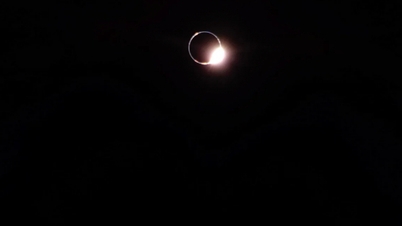


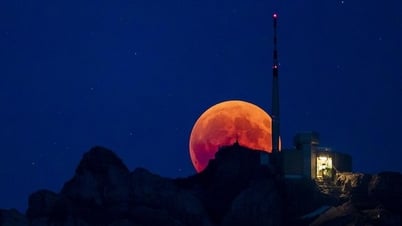


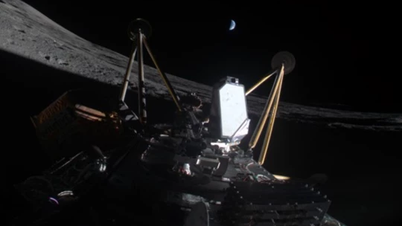
















































![[Photo] Prime Minister Pham Minh Chinh talks on the phone with Singaporean Prime Minister Lawrence Wong](https://vphoto.vietnam.vn/thumb/402x226/vietnam/resource/IMAGE/2025/5/8/e2eab082d9bc4fc4a360b28fa0ab94de)















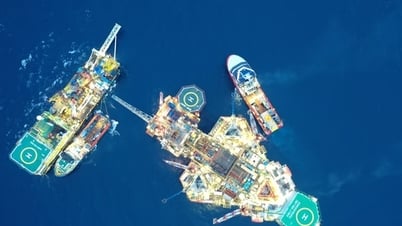















Comment (0)